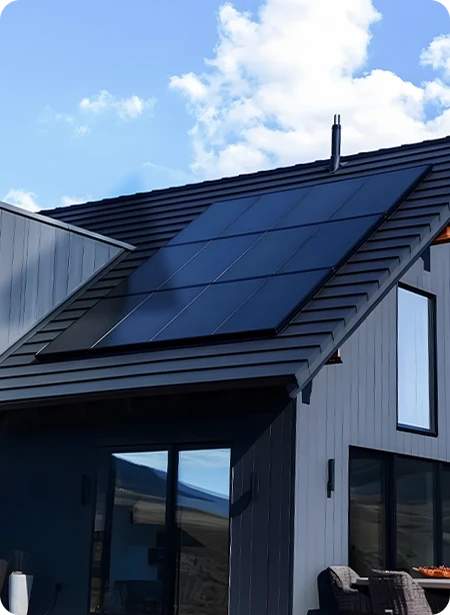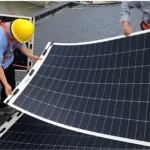Australia has become a global leader in solar energy adoption, with nearly one-third of homes now equipped with solar panels. This widespread uptake of solar technology has led to a new question for many homeowners: can I sell excess energy from solar panels Australia?
Fortunately, in Australia, there are ways to profit from surplus solar power, whether by selling energy back to the grid through Feed-in Tariffs (FiTs) or directly to neighbors via peer-to-peer (P2P) energy trading. Below, we’ll explore both methods, including current rates, tips to maximize earnings, and the potential future of these energy solutions.
Selling Back to the Grid: Feed-in Tariffs (FiTs)
The traditional way for Australians to sell excess solar power is through Feed-in Tariffs (FiTs). This system allows homeowners to send surplus energy back into the electricity grid, where it’s distributed for general use. In return, energy retailers pay for this contribution at a rate determined by the retailer and state policies. Currently, these rates typically range from 5 to 20 cents per kilowatt-hour (kWh), varying according to factors such as location, energy provider, and solar system size.
FiTs are an accessible and relatively straightforward way to start earning from solar energy. However, to truly benefit, it’s important to understand the factors influencing FiT rates and take steps to maximize earnings.
Maximizing Earnings with FiTs
To make the most of your Feed-in Tariffs, consider the following strategies:
- Install a Larger Solar System: The more solar panels you have, the more electricity your system can generate, leading to a higher surplus that can be sold back to the grid. For households with space and budget, installing a larger system can be a wise long-term investment for maximizing returns from FiTs.
- Choose the Right Energy Retailer: FiT rates vary among energy retailers, so it pays to shop around. Compare the tariffs offered by different providers to find the best rate in your area. Some providers offer incentives or higher FiT rates for customers with large solar systems, while others may offer lower rates.
- Monitor and Optimize Energy Use: To increase the amount of energy available for export, monitor your household’s electricity use and try to consume more during daylight hours. This way, you’ll be able to export more energy when solar panels are most productive, especially if you shift high-energy activities—like laundry, dishwashing, and charging devices—to midday hours.

Peer-to-Peer Energy Trading: A New Way to Profit
In addition to selling energy back to the grid, Australians now have the option to explore peer-to-peer (P2P) energy trading. This emerging method leverages new technology platforms, such as Powerledger, that allow homeowners to sell their surplus solar energy directly to others, often at rates higher than standard FiTs.
P2P energy trading not only offers potentially better returns but also supports the growth of a renewable energy community by connecting neighbors in a mutually beneficial relationship. Through P2P, a homeowner can offer a friendlier rate than an energy retailer might, while the buyer may still pay less than retail rates for the energy received.
How P2P Energy Trading Works
While P2P trading is still in its early stages in Australia, pilot programs are being tested across the country. One notable example is the Yackandandah mini grid project, where households in this Victorian town share energy resources and trade excess power between homes. Such projects demonstrate the potential for P2P trading to create a more decentralized, locally focused energy market where communities can reduce dependence on traditional grid power and take ownership of their energy needs.
The Future of Solar Energy Selling: What’s Next?
The landscape for selling excess solar energy in Australia is evolving, with more regulatory changes on the horizon. The Australian Energy Market Commission (AEMC) is working on reforms to further expand the opportunities for homeowners, potentially including more flexible pricing structures and simplified trading options. Such changes could lead to dynamic, real-time pricing, where homeowners might receive higher rates during peak demand periods.
As these regulatory adjustments unfold, the incentives for homeowners to invest in larger solar systems or battery storage solutions are likely to increase. Battery storage could allow homeowners to store excess solar power generated during the day, selling it later when demand—and prices—are higher. This flexibility could make solar investments even more profitable over time.
Key Takeaways for Homeowners Considering Solar Investments
With solar adoption on the rise and new pathways to earn from excess energy, Australian homeowners have more options than ever. Here’s a quick summary to guide anyone considering or already invested in solar:
- Explore FiTs as a Stable Option: Selling excess energy back to the grid is a convenient way to earn, even if rates are somewhat modest. Research energy providers to find the best FiT rates in your region.
- Consider P2P Trading for Community Engagement and Higher Returns: If available in your area, peer-to-peer trading platforms can help you earn more than traditional FiTs and foster a sense of community.
- Stay Informed About Emerging Regulations: With upcoming reforms, the landscape may shift towards more flexible pricing models, potentially making solar investments even more rewarding.
As technology and policies evolve, the profitability of excess solar energy is likely to continue improving. By staying informed and making strategic choices, Australian homeowners can maximize their returns, helping not only their own financial well-being but also contributing to a more sustainable, decentralized energy future for everyone.







